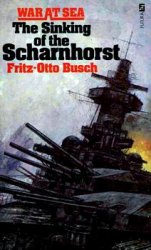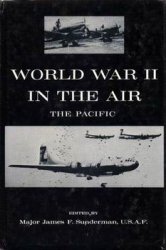In December 1950 he assumed command of Eighth Army after the death of Walton Walker. Ridgway enjoyed the confidence of the Joint Chiefs of Staff and unlike MacAr-thur believed that the war must remain limited. As Washington’s man, Ridgway refused to live in MacArthur’s shadow and enjoyed an independence unknown to his predecessor. He arrived in Korea when the fortunes of Eighth Army were at a low ebb. He inherited a demoralized command which was in awe of the Chinese. Determined to attack, Ridgway fired incompetent officers and adopted new tactics, employing air power and artillery to wage a war of attrition. By March 1951 a revitalized army had halted the Chinese and driven them back across the 38th Parallel. In April 1951 Ridgway replaced MacArthur as c-in-c Far East and head of the un Command. Unlike his predecessor he had no desire to extend the war to China, believing it would merely weaken the US by diverting resources from Europe, the vital strategic area. He was in full agreement with the decision to initiate truce talks in July 1950 although he sometimes favoured a tougher line in the negotiations than his superiors in Washington. On May 12 1952 Ridgway left Tokyo to assume command of NATO. He was cos, US Army, 195355. His successor as c-in-c Far East was Gen Mark W Clark. CM.
Riffian War (1919-26). Spain’s enclaves in northern Morocco (see MOROCCAN war) were threatened in the west by the bandit chief Ahmed ibn-Muhammed Raisuli (1875-1925), and in the east by the Muslim Berber tribes of the Rif mountains under Abd el-Krim (1882-1963). Raisuli’s revolt was quashed, 1920-21, by the Spanish Resident-General Damaso Beren-guer, while Gen Fernandez Silves-tre moved against Abd el-Krim. On July 21 1921, at Anual, Silves-tre’s 20,000-strong force (12,000 killed) was surrounded and destroyed by the Rifs. With the modern equipment captured at Anual, the Rifs drove the Spanish from northeast Morocco, 1922-24. Proclaiming himself president of the “Riffian Republic”, Abd el-Krim in April 1925 moved south with
20,000 men against the French, breaking through their blockhouse line and threatening Fez. The French Resident-General Lyautey fought a skilful delaying action while Spanish and French expeditionary forces were prepared. From September 1925, a 50,000-strong Spanish force under Gen Jose Sanjurjo pressed south from the coast, while Retain (Lyautey’s successor), with 150,000 men, drove north. Surrounded at Tar-guist, Abd el-Krim surrendered on May 26 1926. RO’N.
Rifle. The breechloading, bolt-action rifle, magazine-fed with metallic cartridges employing smokeless propellant, was firmly established as the infantryman’s principal weapon by the end of the 19th century and remained so, with exceptions noted below, until after World War II. Typical was the British Short Magazine Lee-Enfield: the Mark III of World War I, of 0.303in (7.7mm) calibre, fed by a 10-round box magazine and sighted to 2,000yd (1,829m), was near-identical with the Number 4 rifle of World War II.
With the bolt-action rifle, which must be cocked before each shot, 15 aimed rounds per minute (rpm) reflects a high standard of musketry. A much higher rate of fire is achieved with self-loading arms, in which the energy produced by the firing of a cartridge is utilized to eject the spent round and chamber
. and fire another. The first viable self-loaders, developed in the 1880s—1890s, were the recoil-operated Maxim machine gun and the gas-operated Colt-Browning machine gun. During World War I, the domination of infantry tactics by the machine gun led to the quest for greater fire power for the small unit (achieved via the light machine gun) and for the individual.
The latter need was answered by the sub-machine gun. The first in general production, to equip the German stosstruppen (“storm troops”) of 1918, was the MP.18 (“Bergmann”), a compact weapon -32in (81cm) long, as compared to c45-50in (114-127cm) for the average rifle - fed with 9mm pistol cartridges from a 32-round magazine (cyclic rate of fire: 400 rpm) and sighted to 200m (219yd). The sub-machine guns extensively used by the armies of World War II did not differ significantly from this specification.
The sub-machine gun, with its low-powered pistol cartridge, was primarily a close-range weapon. A self-loading weapon equally effective at short and intermediate ranges - up to c400-60Uyd (360550m) - was needed. Again, Germany led the field with the Fall-schirrnjdgergewehr 42 of 1942 and, notably, the 7.92mm Mas-chinenpistole MP.44 (called the Sturmgewehr, “assault rifle”, and thus giving this type of arm the name it bears today), fed by a
30-round box magazine (500 rpm) and sighted to 800m (875yd). However, the bolt-action rifle still predominated, the only selfloading rifle in general issue being the American.30 calibre Ml (Garand) rifle (not to be confused with the.30 calibre Ml carbine, which, with its 15-30 round box magazine, represented a rifle/sub-machine hybrid).
In warfare since 1945, it has come to be accepted that the function of the rifle is to deliver a heavy volume of fire at ranges rarely exceeding c300yd (275m), in the hands of infantrymen operating from armoured personnel carriers. Thus, although the bolt-action rifle survives as a specialized snipers’ weapon, assault rifles (compact, and adjustable for semi - or full-automatic fire) have become standard in most armies. Notable examples are the US 5.56mm AR-15 (M16) Armalite and the Soviet 7.62mm AK-47 (later model, AKM) “Kalashnikov”, both fed by a 30-round magazine (600—900 rpm) and with an effective range of c330-440yd (300400m). RO’W.
Rimini Line, breaching of
(September 18-20 1944). Tenth Army (von Vietinghoff) tried to prevent Eighth Army (Leese) breaking out of the Apennine foothills into the Po Valley by holding a line running westwards from Rimini. Leese attacked with both his own corps: I Canadian Corps (Foulkes) cleared the San Fortunata ridge, and V Corps (Keightley) won the battles of Ceriano on the inland flank. Von Vietinghoff abandoned the line as the autumn weather broke, turning the supposedly good tank country into a morass for the winter.




 World History
World History
![The Battle of Britain [History of the Second World War 9]](/uploads/posts/2015-05/1432582012_1425485761_part-9.jpeg)








